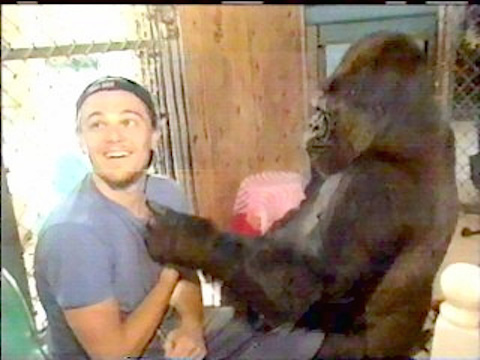A defining television moment of my generation—Sinead O’Connor’s infamous ripping up of a picture of Pope John Paul II on live television after an a cappella performance of Bob Marley’s “War”—was as baffling to most as it was offensive to many. (O’Connor offered many eloquent explanations for the act—mostly ignored.) Not only did this strange form of protest effectively send O’Connor into semi-obscurity for the next twenty years, but it got her permanently banned from Saturday Night Live by producer Lorne Michaels. Michaels, it seems, didn’t so much object to her desecrating the pope’s picture. In fact, he has said he would have been fine with it… if only he’d known it was coming. He has called the moment both “a serious expression of belief” and “on a certain level, a betrayal.”
Michaels has banned many a performer from the show, for many a reason. But most of all, it seems, Lorne Michaels hates surprises. As we’ve previously noted, 23-year-old Elvis Costello pissed Michaels off when he stopped his band during the intro to “Less Than Zero” and launched into “Radio, Radio” instead (above), a song he’d explicitly been told not to play for its critical take on mass media. Unlike O’Connor, Costello would return to SNL when Michaels cooled down, 12 years later, in 1989.
Legendarily brilliant mess The Replacements hit the SNL stage in 1986 after the release of their first major-label album, Tim. They put on a respectably drunken, out-of-tune performance for their first song on the show, “Bastards of Young” (introduced by host Harry Dean Stanton).
So far, so classic ‘Mats. But between this song and the next, “Kiss Me on the Bus” (above), it’s said they drank close to their weight in champagne, and by the time they took the stage again—wearing each other’s clothes and stumbling wildly—they were a completely soused parody of themselves. Funny, right? Lorne Michaels was not amused. Singer Paul Westerberg returned to the show as a solo artist, but the band never received another invitation.
Long before stoner-rappers Cypress Hill got the SNL boot for smoking a joint onstage and trashing their equipment in 1993, abrasive punk band Fear was said to have sparked a riot and caused $200,000 worth of damage to the set during their 1981 Halloween show appearance (above—introduced by host Donald Pleasance). Guests of John Belushi, who agreed to make a return cameo on the show on the condition that Fear come with him, their performances featured typical punk show antics, with rowdy audience members smashing into each other and storming the stage. The N.Y. Post published an absurdly sensational description of the band’s appearance, citing the $200,000 figure and quoting an unnamed “NBC technician” as saying, “this was a life threatening situation. They went crazy. It’s amazing that no one was killed.” Billboard later set the record straight, however. Apparently, the extent of the offense consisted of “somebody… yelling obscenities close to an open mike.” Producer Dick Ebersol cut the performance short, and the show received “all of 12 complaints from viewers.” As for all the supposed mayhem, Fear singer Lee Ving said, “all that happened was that a plug got pulled out and a Halloween pumpkin was destroyed.” Nevertheless, Fear would not be invited back. Read more about that Fear appearance and Belushi’s love of punk rock here.
Belushi figures in the performance of another musician banned from the show—Frank Zappa—who served as both musical guest and the show’s host. Zappa’s pompous attitude alienated most of the cast and crew in his first, and last, SNL appearance in 1978. Nerve names Zappa the second worst host in the show’s history, citing his “suffocating air of smugness and unconcealed contempt for what he’d agreed to do.” During the usually chummy closing credits, “the cast members, obliged to join him onstage, clustered near the edge as if fearing his personality might be contagious.” All but Belushi, who also joined Zappa and band onstage as Samurai Futaba during their third number. As the clips above demonstrate, even SNL’s second worst host could still inject a good bit of wit and energy into a show that’s often wanted for both, not to mention the most well-rehearsed band in both avant-rock performance art and live televised sketch comedy.
Related Content:
The Stunt That Got Elvis Costello Banned From Saturday Night Live
William S. Burroughs on Saturday Night Live, 1981
Lorne Michaels Introduces Saturday Night Live and Its Brilliant First Cast for the Very First Time (1975)
Josh Jones is a writer and musician based in Durham, NC. Follow him at @jdmagness





